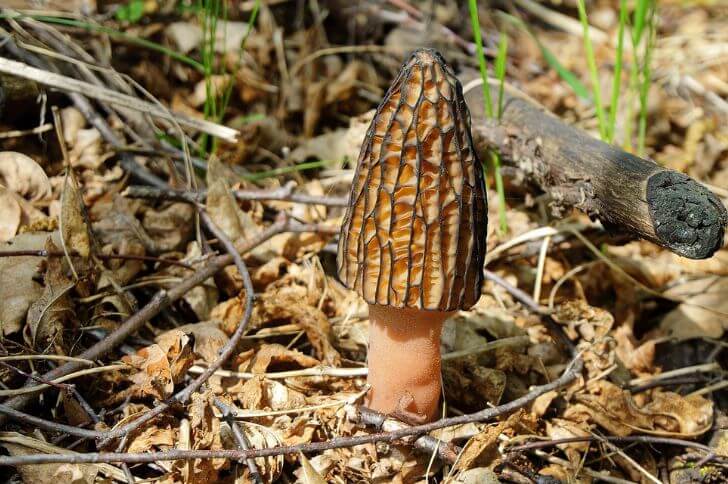White mushrooms are a delightfully versatile ingredient that can add texture and flavor to any dish. As one of the most popular types of mushrooms, there are several varieties of white wild mushrooms available for you to cook with. Here’s an overview of some of the most commonly found types:
Button Mushrooms are round and plump, and have a mild taste. They can be used in salads, soups, sauces or eaten on their own as part of a side dish. Portobello Mushrooms are bigger than button mushrooms and have a meaty texture when cooked. Popularly served grilled or sautéed as an entrée or burger substitute, they also make great additions to stews and casseroles.
Cremini (or baby bella) Mushrooms closely resemble portobellos but are smaller in size. Below we’ll look at the types mentioned above and more.
List of White Mushrooms
1. Enoki Mushrooms
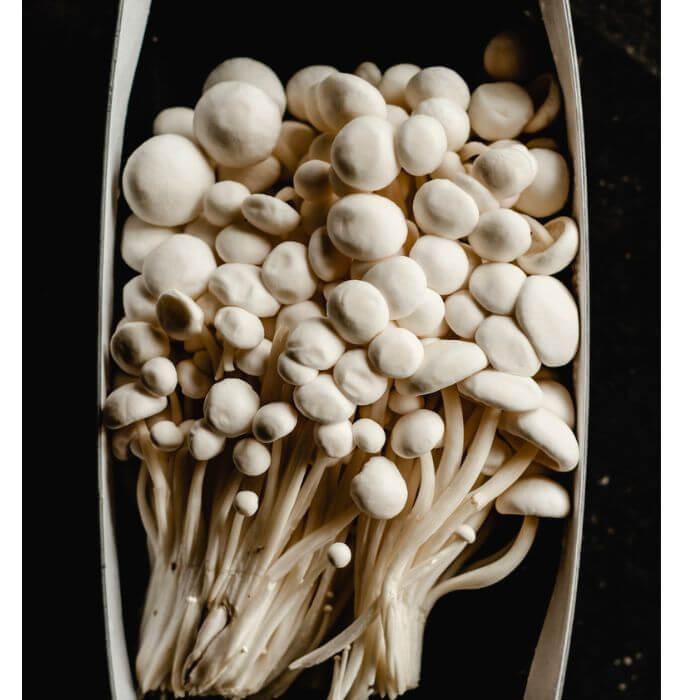
Enoki mushrooms are slim, white-capped fungi that are typically found in wooded areas and produce large clusters of long, thin stems with small caps.
They have a mild flavor and crunchy texture that can be used to enhance many dishes. Identifying enoki mushrooms is relatively easy as they stand out among other mushroom varieties due to their distinctive shape.
The stems of enoki mushrooms range from two to four inches long and often have a stringy appearance like celery stalks. The small, white caps at the top of each stem are usually no more than an inch wide, making them easily recognizable among other mushrooms.
The coloration of the caps can vary from almost completely white to yellowish or tan hues depending on the amount of sun exposure they receive while growing. Unfortunately, these white mushrooms grow in the wild in Asia but luckily you can find them in stores in North America.
2. Lion’s Mane
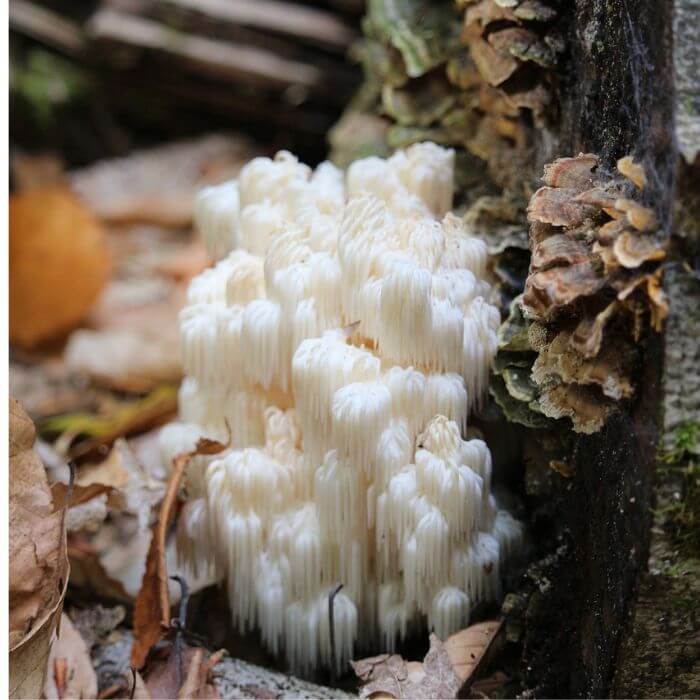
A white wild mushroom with one of the most unique names in the fungi world is the lion’s mane. And yes, it does look like the mane of the King of the Jungle.
Instead of the traditional cap found on most white wild fungi, lion’s mane sport a large clump of spines that can be a few inches long.
In North America, this wild mushroom pops out in late summer through fall. You can spot them on dying maple, beech or oaks. . Lion’s mane mushrooms have an edible flesh with a mild seafood flavor that makes it an excellent substitute for meat in vegetarian dishes.
3. Inky Cap
Inky cap mushrooms are a type of edible mushroom that can be identified by their distinctive features.
They have a white stem with shaggy scales and an off-white to tan cap that looks like its been shredded. This mushroom is typically seen in fields, lawns, and along roadsides during the late summer and early fall months.
Are this white wild fungi edible? Yes, inky caps are edible but not recommended. They are too small, meaning more time spent picking and they contain coprine.
4. Aspen Oyster Mushrooms

Colloquially called spring oysters, aspen oyster mushrooms are delicate and soft mushrooms that occur in North America, growing on aspen trees.
Identifying Aspen oyster mushrooms is relatively easy due to their distinctive shape. The caps are fan or kidney-like with incurved edges. Color ranges from creamy white to pale tan depending on the age. Another telltale feature is their decurrent, closely spaced white gills.
Aspen oysters typically have short, thick stems which taper down from the cap’s underside. When foraging for these mushrooms, pay close attention to aspen trees or cottonwoods.This white fungus is loved for its delicate seafood flavor.
5. Button Mushrooms
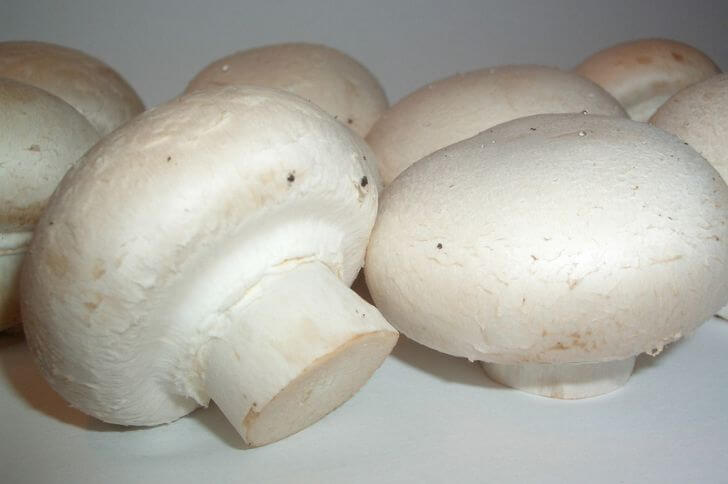
If you’re out mushroom hunting and come across some plump, white mushrooms with puckered caps, you may have stumbled on button mushrooms.
Button mushrooms are the most commonly cultivated variety, belonging to the Agaricus species. They are easily identifiable by their white color, short stems, and small caps that can be anywhere from 1 to 4 inches in diameter.
Button mushrooms have an earthy flavor that makes them popular among cooks looking for a versatile ingredient.
They can be eaten raw or cooked in a variety of dishes and pair especially well with vegetables like carrots and onions. Their texture is firm yet tender when cooked, making them ideal for adding meaty flavor to soups and stews without overpowering other ingredients.
6. Giant Puffball

Giant puffball mushrooms are a unique mushroom variety that offer a wealth of culinary possibilities. Unlike more common white mushrooms, giant puffballs are round and white-to-off-white in color and can reach sizes of up to two feet in diameter.
While they may look intimidatingly large, giant puffballs have a soft texture similar to that of an eggplant or zucchini when cooked.
These large fungi have been enjoyed for centuries, likely as far back as the ancient Greeks and Romans.
Today, they’re still enjoyed around the world with recipes ranging from fried to baked dishes; they can be sliced thin like steak fries or roasted whole into a flavorful side dish. With their wide array of culinary uses, giant puffball mushrooms are sure to please any mushroom lover’s palette
7. Meadow Mushrooms
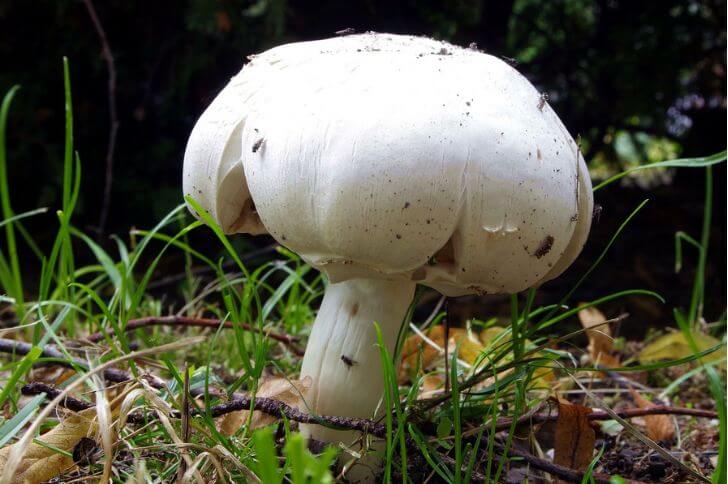
Meadow mushrooms are a common sight in many fields and meadows, but identifying them can be a tricky business.
Identifying meadow mushrooms starts with understanding the basic characteristics that make up these fungi. Caps are usually round with a convex shape, while the gills underneath are connected to a stalk. Also gills on your species tend to have a pinkish hue that turns brown as this white wild mushroom ages.
Another distinctive feature is its white flesh. Note, meadow mushrooms’ flesh stain reddish brown. If it stains yellow, do not harvest. Most foragers love them for their mushroomy taste.
8. Cauliflower Mushroom

Identifying cauliflower mushrooms is essential for any mushroom enthusiast. These unique fungi have a variety of interesting characteristics that make them distinct from other types of mushrooms.
The most distinguishing feature of the cauliflower mushroom is its large fruiting body that can measure up to 24 inches. Its surface is made of small wavy caps clustered together that give it a noodle-like or brain-like look.
This cap can range in color from white to pale yellow. Additionally, these mushrooms produce a distinctive smell that experts describe as musky. Also their nutty taste makes them a great substitute for morels.
9. Sculpted Puffball Mushrooms
Another weird looking white wild mushroom you should be on the lookout for when hunting is the sculpted puffball mushrooms. They have a unique shape and texture, making them easy to identify.
Like the name suggests, sculpted puffballs have egg-shaped fruiting bodies that are about 6 inches in length. The surface is covered with triangle-shaped warts. Like the common puffball above, the inside is all white.
They are edible when young, but should not be eaten if they become older. Sculpted puffballs are common in Oregon, California, and Washington.
10. Peppery Milky ( Lactarius piperatus)
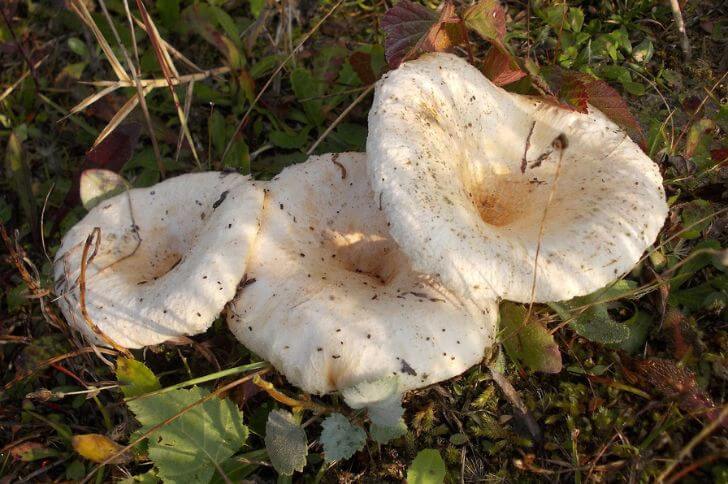
Peppery milkys are a popular edible white mushroom loved for their hot and peppery flavor. They are common in central and eastern North America, ranging from Maine to Alabama.
If you want to see how much ‘hot’ your taste buds can handle, here are a few tips to help you identify peppery milky or blancaccio.
Scientifically known as Lactarius piperatus, this white wild fungus grows in the wild from July to September. These mushrooms have a white to off-white cap that is typically 2.6-6.5 inches wide and has an even surface. Under the cap, note its gills are white and crowded.
The mushroom’s stem is thick and cylindrical in shape and fairly smooth. When sliced, peppery milkys have white flesh that produce a whitish liquid. So, if looking to see how much ‘hot’ you can handle, try this white wild mushroom.
11. Silky Rosegill (Volvariella bombycina)
Volvariella bombycina or silky rosegill mushrooms are one of the rarest mushrooms of North America. Though edible, we do not recommend them because they are often confused with a very common lookalike, the destroying angel.
Initially, this white wild mushroom appears in an egg-shaped form then slowly opens to reveal its fruiting body. Its white colored cap is covered with small silky fibers and grows up to 8 inches in diameter. Underneath, gills start off white turning pinkish with age.
The stalk is typically white with scales. Note, because the bag-like structure that covered it in its early days will remain on its base. Though edible, we recommend you opt for other easily identifiable mushrooms.
12. Milk-white Brittlegill
The russula family has one of the widest varieties of mushrooms that come in various sizes and colors; ranging from purple to white.
Milk-white brittlegill mushrooms or Russula delica are a white member of this family, providing foragers with one of the biggest fruiting bodies in this family.
But before you get excited you should know that experienced foragers give it a wide berth. Yes, the milk-white brittlegill is one of the largest in its family, but its poor flavor makes it not worth collecting.
However, to identify this brittlegill check for a large mushroom with a white cap, up to 6 inches in diameter.
It is convex shaped in young species becoming flat with age and eventually the center becomes slightly depressed, giving it a vase-shaped fruiting body. Also as it ages, it changes color from white to brown.
These white wild mushrooms have white flesh that’ll discolor brownish when cut. Like most russulas they have crowded gills.
Inedible White Fungi
13. White Dapperling

White dapperling mushrooms, scientifically known as Lepiota leucothites, are inedible fungi found in grassy areas.
The cap of the mushroom is convex or bell-shaped with a scaly texture, while the gills on its underside are white colored. Additionally, the stem is usually 2-4.7 inches long and has a swollen base.
14. Destroying Angel
Destroying angel mushrooms are often mistaken for edible species like silky rosegills and button mushrooms.
This white wild mushroom is all white with an elegant cap that can measure between 2-4.2 inches in diameter. It also features distinctive free gills on the underside of the cap and a long fibrous stem.
Finally, destroying angel mushrooms produce a white spore print when smeared on paper; this helps to further differentiate them from other species.
FAQs
What kind of mushrooms are all white?
Common North American mushrooms that are white include button mushrooms, inky caps, aspen oysters, peppery milky and common puffballs.
What are white mushrooms in my yard?
Common white lawn mushrooms include destroying angels, shaggy manes, green-spored parasols, meadow mushrooms. In this group, only meadow mushrooms are edible. However, we recommend you avoid eating any white-colored yard mushrooms.
Sources:
Hi There,
My name is Jenny. I’m the Chief Editor at Try Green Recipes and besides making yummy and healthy foods for my kids, grandkids, and friends. I’m new to the blogging world but I believe what I have to share is unique and will bring joy to your home. If you are adventurous and want try something tasty, let’s get started.

